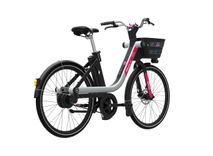We’ve designed a bike, Fusion, that will make it possible for operators to serve two enormous use cases - traditional sharing and the long-term leasing services - with the same vehicle. With a vehicle that is built for both use cases, operators will be able to offer a more complete user experience whilst improving user retention.
Further down the line, they could even make it possible for users to switch between sharing services and long-term leasing in an instant.
Jump to:
- Why should we care? - The problem with subscriptions & leasing services
- Introducing Fusion - Using Fusion for traditional sharing or for leasing
- Combining use cases - sharing and leasing for maximum reach and ridership
- A dedicated long-term leasing app - a white-label app by Zoov
1. Why should we care?
Well, operators aren’t offering the right subscriptions.
Subscription models offer operators with guaranteed monthly income - like any other subscription model. The problem is that subscription models in micromobility have been hurriedly put together, rather than carefully laid out.
Micromobility subscriptions remain:
- Unreliable. Subscribers have no guarantee of being able to pick up a functional vehicle, near them, with enough battery to make their trip.
- Exclusive. People on the outskirts of cities will never buy a subscription service if their house is outside of the geofencing of the service. Operators are missing out on a huge market.
- Unsatisfying. The experience given by a fleet vehicle will always come second best to a private vehicle in comfort, personalisation and overall experience.
Other companies, such as Swapfiets, are able to offer subscribers a personal bike for a fixed monthly fee. But that comes not without its pitfalls.
Leasing services should be:
- ‘Smart’. Users shouldn’t have to miss out on the amazing benefits that your micromobility services offer (data on your trip, loyalty points, GPS route-planning).
- Robust. Subscribers have to lock up their vehicles or take them inside their house when they arrive at their destination. They are not built for the streets and, whilst repairs and maintenance are guaranteed, isn’t it just a whole lot easier to never have to worry about it?
- ‘Connected’. Trip data is essential for operators to understand user behaviour and think about ways to boost stickiness and retention.
Operators need to continue doing what they do so well: offering excellent sharing services.
However, should they not also diversify their business model to attract an audience that wants unlimited and unrestricted access to a high-quality, connected vehicle?
2. Introducing Fusion
Fusion combines the best of micromobility and leasing.





